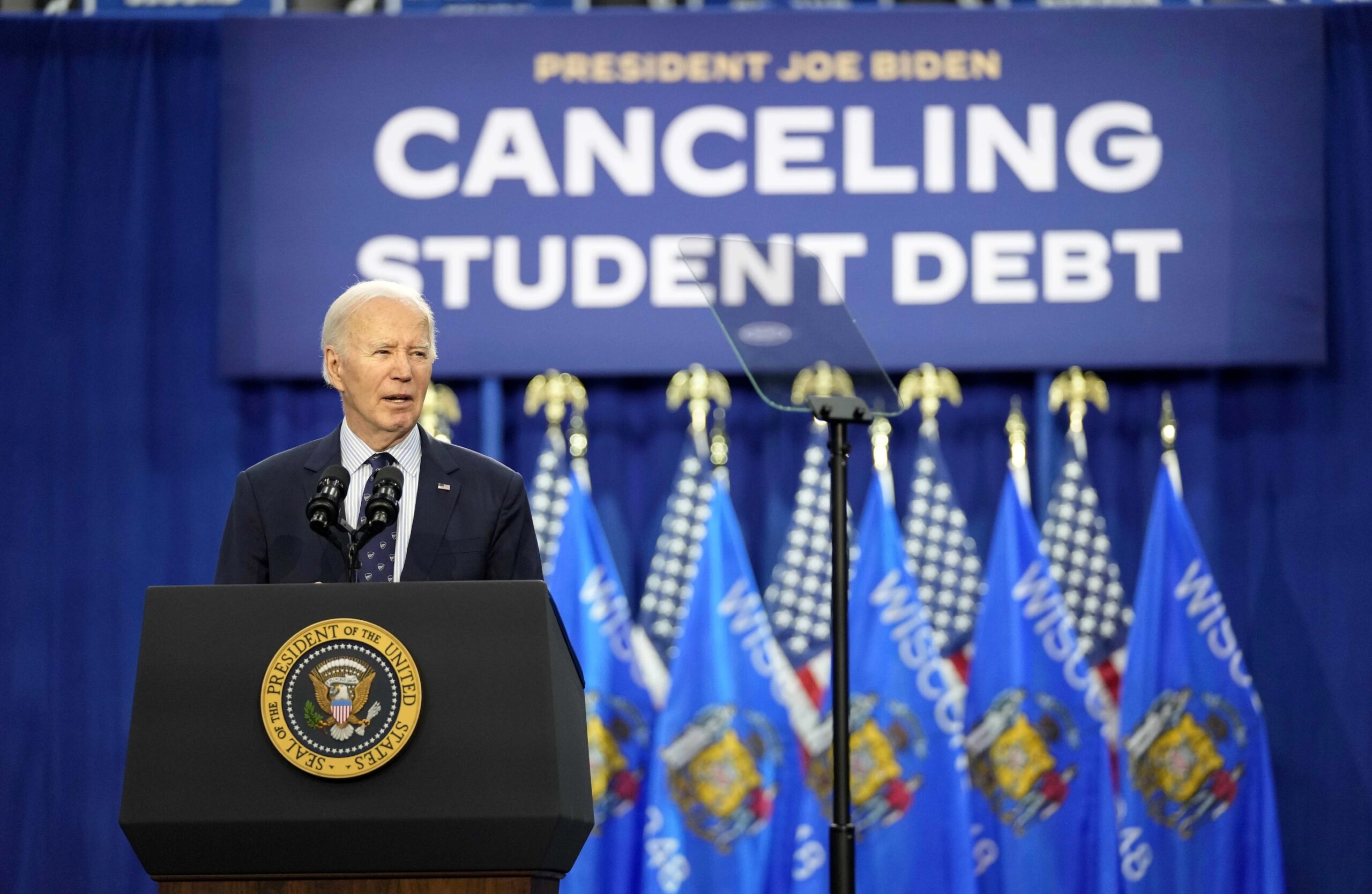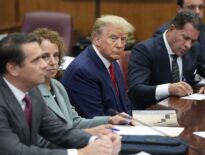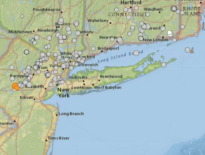WASHINGTON (AP) — President Joe Biden is taking another shot at student loan cancellation, hoping to deliver on a key campaign promise that he has so far failed to fulfill.

In a visit to Wisconsin on Monday, Biden detailed a proposal that would cancel at least some debt for more than 30 million Americans. It’s been in the works for months after the Supreme Court rejected Biden’s first try at mass cancellation.
Biden called the court’s decision a “mistake” but ordered the Education Department to craft a new plan using a different legal authority. The latest proposal is more targeted than his original plan, focusing on those for whom student debt is a major obstacle.
Here’s what to know about the new plan:
HOW IS THIS DIFFERENT FROM BIDEN’S FIRST PLAN?
Biden’s first attempt at widespread student loan cancellation would have erased $10,000 for borrowers with yearly incomes of up to $125,000, plus an additional $10,000 if they received federal Pell grants for low-income students. It was estimated to cost $400 billion and cancel at least some student debt for more than 40 million people.
The Supreme Court rejected that plan last year, saying Biden overstepped his authority.
The new plan uses a different legal justification — the Higher Education Act, which allows the secretary of education to waive student loan debt in certain cases. The Education Department has been going through a federal rulemaking process to clarify how the secretary can invoke that authority.
The new plan targets five categories of borrowers, focusing on those believed to be in the greatest need of help. It would provide relief to an estimated 30 million borrowers. The administration has not said how much the plan would cost.
WHO’S ELIGIBLE?
Biden’s new proposal would offer cancellation to five categories of borrowers.
The widest-reaching provision aims to reset student loan balances for borrowers who have seen their debt grow because of unpaid interest. It would cancel up to $20,000 in interest for Americans who now owe more than they originally borrowed. That cap wouldn’t apply for individuals who make less than $120,000 a year or couples who earn less than $240,000 and also are enrolled in an income-driven repayment plan.
The Education Department says 25 million people would be eligible for that relief, including 23 million who would get their interest erased entirely.
Borrowers who are eligible for other federal forgiveness programs but haven’t applied would also get their loans canceled under the new proposal. It applies to the Public Service Loan Forgiveness program and income-driven repayment plans, among others. It’s meant to help people who missed out on forgiveness because of complex paperwork, bad advice or other obstacles. An estimated 2 million people would be eligible for that help.
All debt would be canceled for borrowers who have been repaying undergraduate loans for 20 years or more, or 25 years for those with graduate school debt. The Biden administration says it would erase loans for more than 2 million people.
Those who attended college programs of “low financial value” would be eligible for forgiveness. The plan would cancel debt for borrowers who went to institutions that lost eligibility for federal education funding because they cheated students. It would also cancel loans for people who went to college programs that left graduates with low incomes compared to their student loans.
A final category would cancel loans for Americans facing hardship that prevents them from repaying their student loans. The rule would allow the Education Department to cancel debt for borrowers who are considered highly likely to default on their loans, and it would create an application system for individuals to detail other forms of hardship.
DO I NEED TO APPLY?
Most of the cancellation would be done automatically with no need to apply. That would be the case for the interest cancellation, borrowers with older loans, those that attended low-value programs, and those eligible for other cancellation programs.
There’s one exception: If borrowers want to make a case that they face some sort of hardship that merits cancellation, they would need to apply individually.
WHEN WILL I GET RELIEF?
The Biden administration says some debt could be canceled as soon as this fall, including interest that has snowballed on top of borrowers’ loans.
That timeline would require some maneuvering. The Education Department said it plans to release a formal proposal in the “coming months.” That would usually be followed by a public comment period of 60 days. Then if the rule is finalized by Nov. 1, it would usually take effect the following July — in this case, July 2025.
But the Higher Education Act authorizes the education secretary to fast-track rules for “early implementation” in some cases. The Biden administration recently used that power to accelerate student loan cancellation offered through a new federal repayment plan. Invoking that authority could allow Biden to start canceling debt later this year.
IS THIS A SURE THING?
Anything but. The Biden administration says it’s confident that the plan is allowed by the Higher Education Act. But loan cancellation of this type is uncharted territory, and conservative opponents are expected to challenge Biden’s plan in court.
Republicans have repeatedly fought Biden’s plan for student loan cancellation, saying it’s an unfair benefit shouldered by taxpayers who repaid their loans or didn’t go to college. Opponents say the Supreme Court was clear that widespread loan cancellation must come from Congress.
If Biden’s plan faces a lawsuit, courts could order the administration to halt cancellation until legal questions are sorted out. That scenario could leave the plan on hold beyond the November presidential election. Even if it survives legal challenges, a Donald Trump victory would spell almost certain doom for Biden’s plan.
CAN CANCELLATION BE REVERSED?
If Biden’s plan is overturned after the administration starts canceling loans, it would present a thorny question: Can forgiven student loans be unforgiven?
Technically, there are ways that canceled student debt can be reinstated. But doing it on such a large scale could be difficult and costly, requiring heavy work from loan servicers contracted to work for the Education Department.
It could also be politically fraught to reinstate debt after it’s been forgiven. Ultimately it could be up to the courts to decide how to handle debt that’s already been canceled.
COLLIN BINKLEY | Collin is a national education reporter







